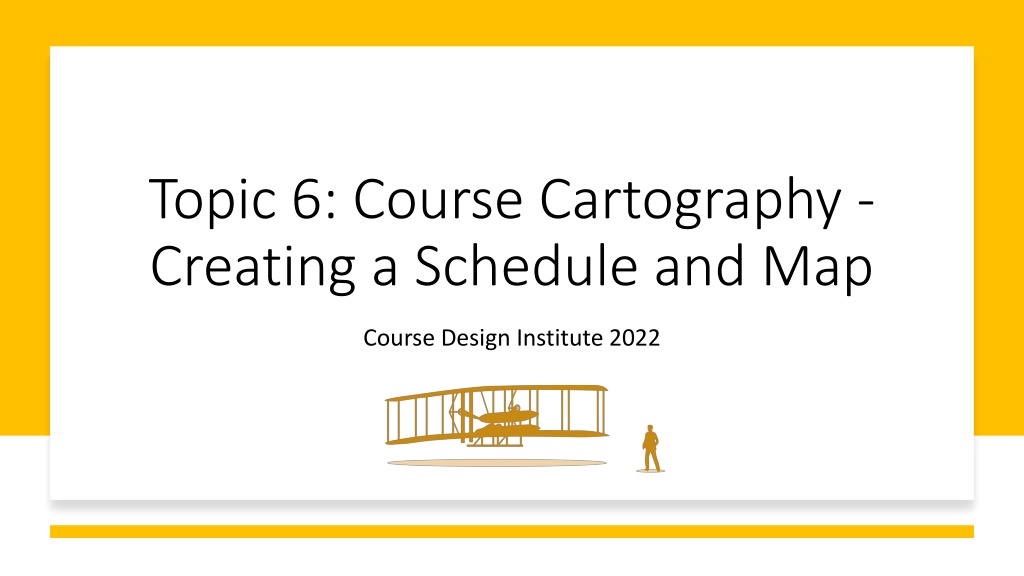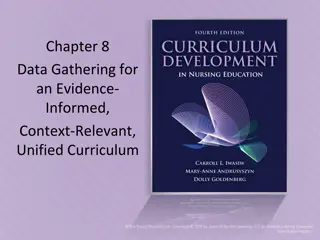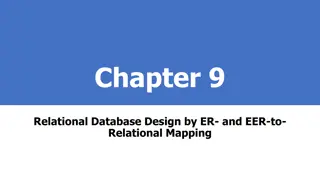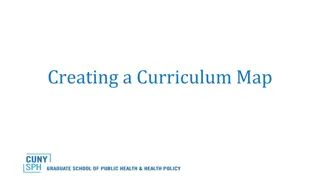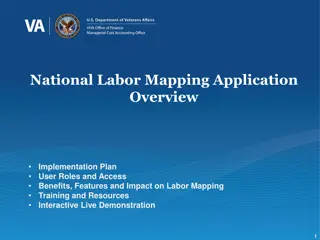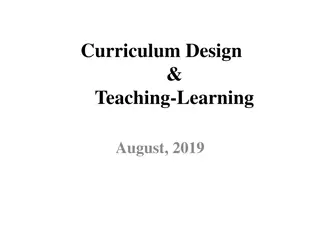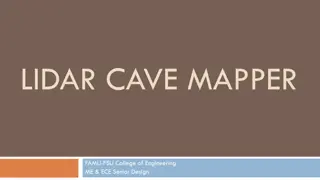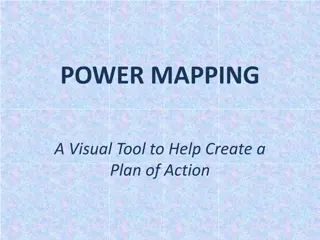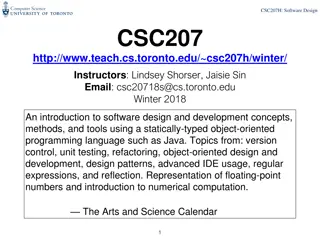Strategic Course Design: Mapping Out Your Curriculum Effectively
Effective course design requires proper planning to ensure all learning objectives are met. This involves creating a schedule, breaking down course content into modules, and aligning assessments with objectives. Keep a long-range plan to stay on track and maximize student learning outcomes.
Download Presentation

Please find below an Image/Link to download the presentation.
The content on the website is provided AS IS for your information and personal use only. It may not be sold, licensed, or shared on other websites without obtaining consent from the author. Download presentation by click this link. If you encounter any issues during the download, it is possible that the publisher has removed the file from their server.
E N D
Presentation Transcript
Topic 6: Course Cartography - Creating a Schedule and Map Course Design Institute 2022
Proper Prior Planning Mind Your Ps and Q Promotes Peak Performance and Quality
Whats Next? Once you ve written your outcomes and objectives and planned your assessments, the next step in course design is to: Look at the entire body of knowledge you intend to cover throughout the duration of the class Break it down into logical components spanning all of the class sessions. Even though it s very tempting to let the class evolve organically, making and sticking to a schedule helps ensure that you ll achieve all your objectives and outcomes by the end of the term.
Long-Range Planning The first task is to map out a master plan of instruction for the entire course. Create a chart or calendar broken into the number of weeks of the course. Start by planning for each week, then separate the weeks into specific class periods after you ve decided what you ll cover each week. As you create this master plan of instruction, always keep your objectives and outcomes in mind. If something you intend to teach is unrelated to the objectives and outcomes you ve written, you ll either need to omit it or to revise the objectives to include it.
Semester Grid Week Date Topics and Activities Assignments and Assessments 1 2 3 4 5 6 7 8 9 10 11 12 13 14 15 16
Modules One of the best organizational methods is to divide the course into modules, each ending in an assessment. Modules can be of any length, from one week to multi-week units of study. They can build upon one another or can present discrete topics and course content. The point is to create conceptual groupings of course content, which facilitate student learning. Action Steps: Consider the entirety of your objectives Determine an appropriate assessment for each objective Input these assessments into your long-range plan
Example: Design Thinking for Entrepreneurs Module 1: Ideation (weeks 1-3) Introduction to design thinking; Virtual crash course in design thinking Why? How? What? Human-centered design and social entrepreneurship Wicked problems and systems thinking Quiz 1 Design Thinking and Wicked Problems Module 3: Implementation (weeks 7-12) Entrepreneurship Business modeling Failure and risk Prototyping and project management Information for innovators Funding and regulations Marketing, branding, and social media Quiz 3 Business Basics Module 2: Innovation (weeks 4-6) Problem solving and problem finding Lateral thinking Critical and computational thinking Quiz 2 Strategies for Ideation Module 4: Evaluation (weeks 13-16) Leadership Ethics, histories, and social context Project presentations Final exam
Materials, Readings and Assignments Your selection of course texts and supplementary materials such as articles, multimedia content, guest lecturers, and even field trips should be governed primarily by your outcomes, objectives, and assessments. If the book, item, or experience you d like to include in your course doesn t align with these overarching concepts, you should carefully consider whether it is beneficial. If so, you ll have to revise your objectives to align the item with your course.
Planning for Reading Assignments An average adult can read about 300 words per minute, and an average page is about 300 words long. This does not mean that 50 pages should take students 50 minutes to read. Textbooks or dense academic language require much more cognitive activity, not counting time for notetaking. This increases the expected time for reading, sometimes double or more what you d expect. Technical reading rates might even be as low as 50 to 75 words per minute. That means 50 pages of technical reading, or 15,000 words (at 300 words per page), could require as much as 5 hours for a struggling student to complete.
Workload Estimator For help with planning readings and assignments for your course, try the Workload Estimator tool from Wake Forest University. https://cat.wfu.edu/resources/tools/estimator2/ Remember: students can be expected to do 9 hours of work per week for a 3-credit hour course, including time spent in class. Expecting them to do more is unfair.
In Class, in the Objectives, and in the Schedule As you begin planning for your instruction, make sure that you provide class time to deliver explicit instruction in your expectations. These should also be included in your course objectives any time a requirement holds the potential to significantly alter a student s grade. For example, you might decide to include an objective related to professionalism, which includes punctuality, use of appropriate professional language, and strict compliance with stated deadlines. These expectations should be supported by explanatory material in the course syllabus and written into your grading rubrics, checklists, and assignment directions.
Building Your Schedule Step 1: Block out any scheduled time off, such as Thanksgiving or Spring Break. Then add your planned assessments for the modules you ve created. Step 2: Next, think back from each assessment to the teaching and instruction that should precede it, filling in the schedule with the topics and activities for each week of each module. You ll need to anticipate: Lecture, demonstration, work time, readings and discussions that must occur before students can complete a project or take a written assessment. The amount of time you feel is reasonable for students to complete a task, such as a collaborative project or research paper. The number of in-class and out-of-class hours available to complete these tasks (9 hours/week).
This class meets two days per week, so each week has been divided into two rows, one for each class session. Partial Schedule Week Date Topics Assignments MODULE 1 - IDEATION 1 Course introduction Introduction to design thinking Read Brown Ch. 2 & 4; Kelly Ch. 4 Virtual Crash Course in Design Thinking 2 Why? How? What? Human-centered design and social entrepreneurship Read Brown Ch. 9; Collins; Liedtka et al Discuss relationship between design thinking and social entrepreneurship based on students responses to Assignment 1 (due today) Assignment 1: 30 under 30 3 Wicked problems and systems thinking Read Cabrera Quiz 1: Design Thinking and Wicked Problems Complete Draw Toast activity
From Schedule to Map Most courses encompass at least 45 clock hours of classroom teaching and learning, along with dozens of associated documents. A course map creates an easy-to-use reference page, allowing students and faculty to see which items are associated with each week of instruction and where to find them. Think of it as a cross between a calendar and an inventory.
Add columns to differentiate Readings, Assignments, Assessments, and Resources Step 1: Modify the Table Week # Dates Topics Readings Assignments Assessments Resources Week 1 Week 2 Week 3 Week 4 Week 5
Step 2 Enter Data Topics: list the topics that will be covered in each course week. Readings: list the abbreviated book titles or authors and assigned page numbers. Specify the day or class session by which the readings must be completed. Assignments: enter the day each assignment will be given and the due date. Include all activities students must complete outside of class. Assessments: enter the assessment title and day it will be administered. Resources: list every document, website (hyperlinked), or instructional material related to the week s instruction, readings, assignments, assessments, or other activities.
Excerpt Sample Course Map Week # Topics Readings Assignments Assessments Resources Week 1 Introduction Brown Ch 1-3 pgs. 2-60 Introduce Assignment 1: Rube Goldberg Blueprint Mini-Quiz on Brown Ch. 1- 3 Syllabus Assignment 1 Instructions What is Design? Week 2 History of Design Thinking Brown Ch 4-5 pgs. 62 - 107 Assignment 1 due at end of week. Mini-quiz on Brown Ch. 4- 5 Assignment 1 Rubric Human- centered Design
Step 3 Look for Gaps Look at the completed course map. Is there an assignment or assessment associated with each course topic? Are there resources to support every assignment (minimally written instructions and a grading rubric or checklist)? Is the planned schedule of readings and assignments reasonable? Is there sufficient time allowed for students to complete everything you ask?
Step 4 Track Objectives and Outcomes Compare your planned instruction with the course objectives and outcomes you developed previously. Method 1: Color-code the course map for each objective by highlighting every topic, reading, assignment, assessment and resource that supports a given objective in the same color to see how they track throughout the course. Method 2: create a table in Word with a row for each objective, then copy-paste each supporting topic, reading, assignment, and assessment into the row.
Step 5 Evaluate the Results Look at the pattern of highlights (or the table you created). Has every objective been covered adequately? Are any objectives too dominant? Is there an assessment for every outcome? Are there any items on the map that were not highlighted? Does everything align with the published course description? (IMPORTANT!)
Step 7 Modify the Course Design If an objective is not covered adequately, incorporate additional instruction. If an objective is too dominant, minimize it to make room for instruction in areas that need reinforcement. If items on the course map do not correlate with the objectives, outcomes, or course description, consider removing or modifying them to create alignment.
Step 8 Quality Control Checklist Is every objective supported by instruction and assignments? Does every assignment have instructions and a grading rubric? Does every outcome have an assessment? Do students have enough time to complete the readings and assignments? Does everything in the course align with the published course description?
Wrap-Up Course mapping is an especially useful tool when planning a new course, but it s also quite helpful when conducting program review or course assessment. Identifying what we teach, when we teach it, how we help our students learn, and how we determine whether they ve learned what we ve taught are essential components of excellence in teaching.
Topic 6 Task: Create Your Schedule and Map Use the template provided on the Topic 6 Worksheet to begin mapping your course. The 30 minutes we can spend during this session will not be enough to finish the process, but it ought to give you a good start.
